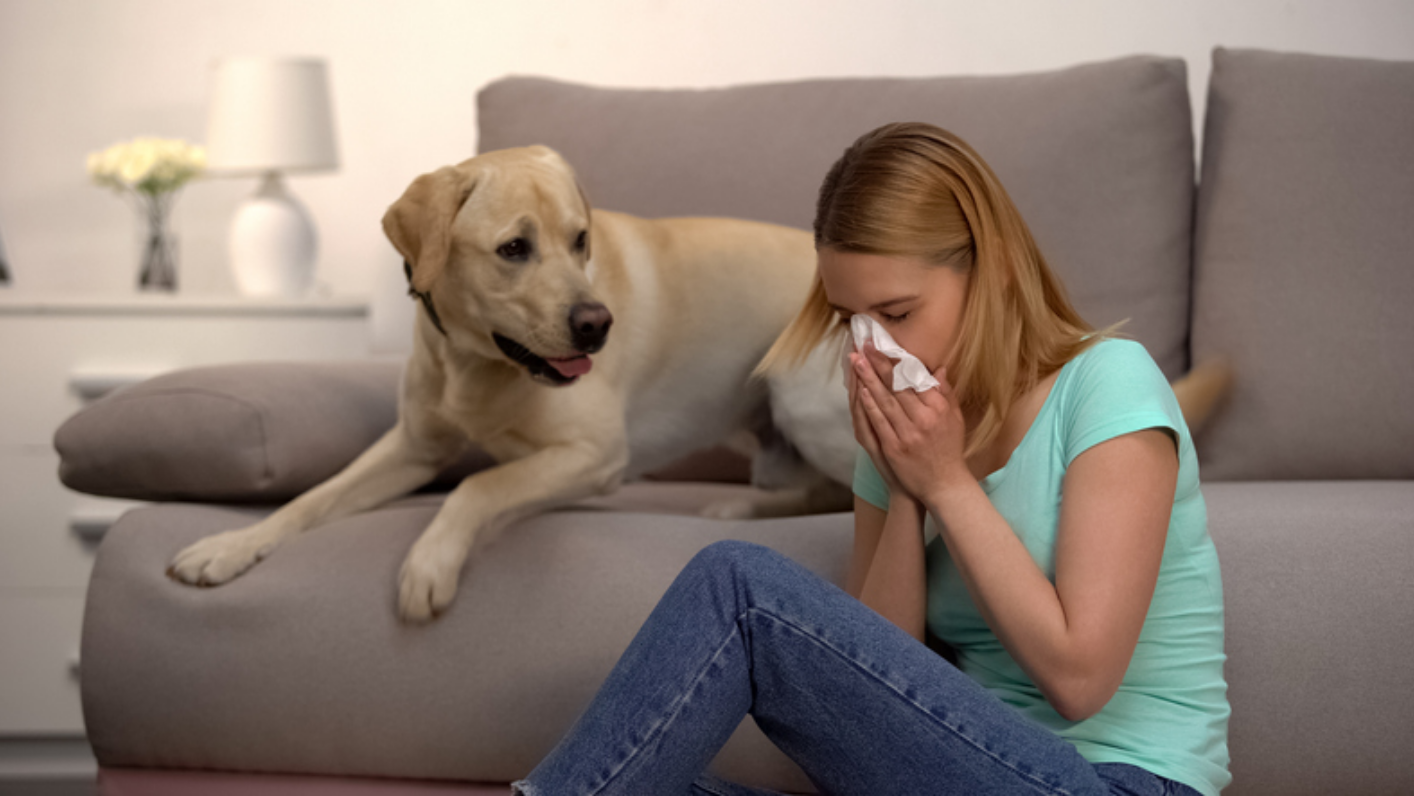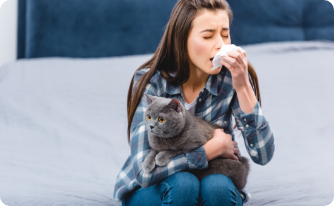What causes dog allergies?
People who are allergic to dogs react to a protein that is found on the pet's fur, hair or saliva. The most common dog allergen is present in its saliva. When a dog grooms itself, the allergens get transferred onto the dog’s fur, where it dries and flakes off, getting released into the air. In addition to this, an allergen found in dog urine is also believed to contribute to an increasing number of allergic reactions.1








